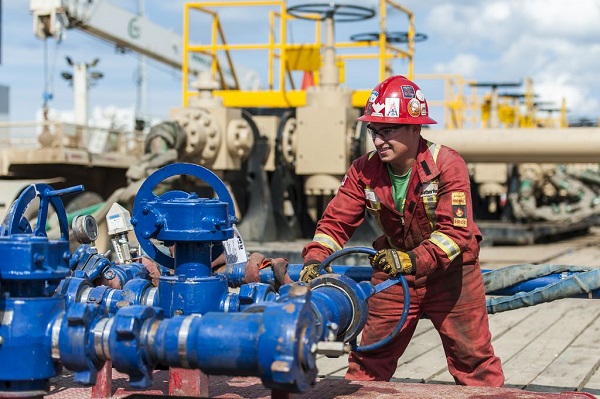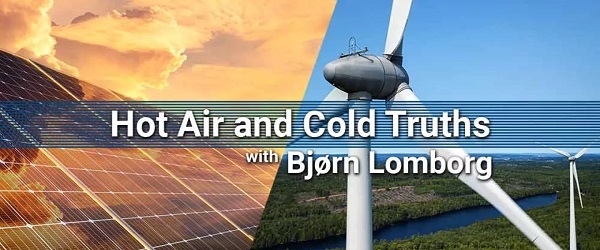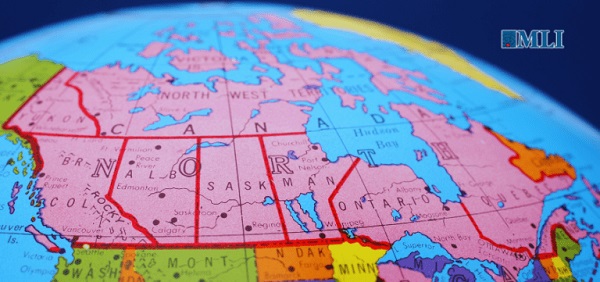Business
Debunking the myth of the ‘new economy’

From Resource Works
Where the money comes from isn’t hard to see – if you look at the facts
In British Columbia, the economy is sometimes discussed through the lens of a “new economy” focused on urbanization, high-tech innovation, and creative industries. However, this perspective frequently overlooks the foundational role that the province’s natural resource industries play in generating the income that fuels public services, infrastructure, and daily life.
The Economic Reality
British Columbia’s economy is highly urbanized, with 85% of the population living in urban areas as of the 2021 Census, concentrated primarily in the Lower Mainland and the Capital Regional District.
These metropolitan regions contribute significantly to economic activity, particularly in population-serving sectors like retail, healthcare, and education. However, much of the province’s income—what we call the “first dollar”—originates in the non-metropolitan resource regions.
Natural resources remain the backbone of British Columbia’s economy. Industries such as forestry, mining, energy, and agriculture generate export revenue that flows into the provincial economy, supporting urban and rural communities alike. These sectors are not only vital for direct employment but also underpin metropolitan economic activities through the export income they generate.
They also pay taxes, fees, royalties, and more to governments, thus supporting public services and programs.
Exports: The Tap Filling the Economic Bathtub
The analogy of a bathtub aptly describes the provincial economy:
- Exports are the water entering the tub, representing income from goods and services sold outside the province.
- Imports are the water draining out, as money leaves the province to purchase external goods and services.
- The population-serving sector circulates water within the tub, but it depends entirely on the level of water maintained by exports.
In British Columbia, international exports have historically played a critical role. In 2022, the province exported $56 billion worth of goods internationally, led by forestry products, energy, and minerals. While metropolitan areas may handle the logistics and administration of these exports, the resources themselves—and the wealth they generate—are predominantly extracted and processed in rural and resource-rich regions.
Metropolitan Contributions and Limitations
Although metropolitan regions like Vancouver and Victoria are often seen as economic powerhouses, they are not self-sustaining engines of growth. These cities rely heavily on income generated by resource exports, which enable the public services and infrastructure that support urban living. Without the wealth generated in resource regions, the urban economy would struggle to maintain its standard of living.
For instance, while tech and creative industries are growing in prominence, they remain a smaller fraction of the provincial economy compared to traditional resource industries. The resource sectors accounted for nearly 9% of provincial GDP in 2022, while the tech sector contributed approximately 7%.
Moreover, resource exports are critical for maintaining a positive trade balance, ensuring that the “economic bathtub” remains full.
A Call for Balanced Economic Policy
Policymakers and urban leaders must recognize the disproportionate contribution of British Columbia’s resource regions to the provincial economy. While urban areas drive innovation and service-based activities, these rely on the income generated by resource exports. Efforts to increase taxation or regulatory burdens on resource industries risk undermining the very foundation of provincial prosperity.
Furthermore, metropolitan regions should actively support resource-based industries through partnerships, infrastructure development, and advocacy. A balanced economic strategy—rooted in both urban and resource region contributions—is essential to ensure long-term sustainability and equitable growth across British Columbia.
At least B.C. Premier David Eby has begun to promise that “a new responsible, sustainable development of natural resources will be a core focus of our government,” and has told resource leaders that “Our government will work with you to eliminate unnecessary red tape and bureaucratic processes.” Those leaders await the results.
Conclusion
British Columbia’s prosperity is deeply interconnected, with urban centres and resource regions playing complementary roles. However, the evidence is clear: the resource sectors, particularly in the northern half of the province, remain the primary engines of economic growth. Acknowledging and supporting these industries is not only fair but also critical to sustaining the provincial economy and the public services that benefit all British Columbians.
Sources:
- Statistics Canada: Census 2021 Population and Dwelling Counts.
- BC Stats: Economic Accounts and Export Data (2022).
- Natural Resources Canada: Forestry, Mining, and Energy Sector Reports.
- Trade Data Online: Government of Canada Export and Import Statistics.
Business
DOGE discovered $330M in Small Business loans awarded to children under 11

 MxM News
MxM News
Quick Hit:
In a bombshell revelation at a White House cabinet meeting, Elon Musk announced that the Department of Government Efficiency (DOGE) had uncovered over $330 million in Small Business Administration (SBA) loans issued to children under the age of 11.
Key Details:
- Elon Musk stated that DOGE found $330 million in SBA loans given to individuals under the age of 11.
- The youngest recipient was reportedly just nine months old, receiving a $100,000 loan.
- SBA has now paused the direct loan process for individuals under 18 and over 120 years old.
Diving Deeper:
At a cabinet meeting held Monday at the White House, President Donald Trump and Elon Musk detailed a staggering example of federal waste uncovered by the newly-formed Department of Government Efficiency. Speaking directly to ongoing efforts to eliminate corruption and abuse in federal agencies, Musk explained that the SBA had awarded hundreds of millions in loans to children—some of whom were still in diapers.
“A case of fraud was with the Small Business Administration, where they were handing out loans — $330 million worth of loans to people under the age of 11,” Musk said. “I think the youngest, Kelly, was a nine-month year old who got a $100,000 loan. That’s a very precocious baby we’re talking about here.”
DOGE’s findings forced the SBA to abruptly change its loan procedures. In a post on X, the department revealed it would now require applicants to include their date of birth and was halting direct loans to those under 18 and above 120 years old. Musk commented sarcastically: “No more loans to babies or people too old to be alive.”
The discovery was just the latest in a series of contract cancellations and fraud crackdowns led by DOGE. According to Breitbart News, DOGE recently canceled 105 contracts totaling $935 million in potential taxpayer liabilities. The agency’s website currently lists over 6,600 terminated contracts, accounting for $20 billion in savings.
The president praised Musk and DOGE for rooting out government inefficiencies, noting his administration was focused on “cutting” people and programs that were not working or delivering results. “We’re not going to let people collect paychecks or taxpayer funds without doing their jobs,” Trump said.
Also during the cabinet session, USDA Secretary Brooke Rollins revealed her department had eliminated a $300,000 program aimed at teaching “food justice” to transgender and queer farmers in San Francisco. “I’m not even sure what that means,” Rollins said, “but apparently the last administration wanted to put our taxpayer dollars towards that.”
These revelations highlight what many conservatives have long suspected—that during prior administrations, including under President Joe Biden, massive amounts of federal funding were funneled into unserious, ideologically-driven projects and mismanaged government programs. Under the Trump administration’s second term, DOGE appears to be living up to its mission: trimming fat, exposing fraud, and putting American taxpayers first.
Business
Cuba has lost 24% of it’s population to emigration in the last 4 years

 MxM News
MxM News
Quick Hit:
A new study finds Cuba has lost nearly a quarter of its population since 2020, driven by economic collapse and a mass emigration wave unseen outside of war zones. The country’s population now stands at just over 8 million, down from nearly 10 million.
Key Details:
- Independent study estimates Cuba’s population at 8.02 million—down 24% in four years.
- Over 545,000 Cubans left the island in 2024 alone—double the official government figure.
- Demographer warns the crisis mirrors depopulation seen only in wartime, calling it a “systemic collapse.”
Diving Deeper:
Cuba is undergoing a staggering demographic collapse, losing nearly one in four residents over the past four years, according to a new study by economist and demographer Juan Carlos Albizu-Campos. The report estimates that by the end of 2024, Cuba’s population will stand at just over 8 million people—down from nearly 10 million—a 24% drop that Albizu-Campos says is comparable only to what is seen in war-torn nations.
The study, accessed by the Spanish news agency EFE, points to mass emigration as the primary driver. In 2024 alone, 545,011 Cubans are believed to have left the island. That number is more than double what the regime officially acknowledges, as Cuba’s government only counts those heading to the United States, ignoring large flows to destinations like Mexico, Spain, Serbia, and Uruguay.
Albizu-Campos describes the trend as “demographic emptying,” driven by what he calls a “quasi-permanent polycrisis” in Cuba—an interwoven web of political repression, economic freefall, and social decay. For years, Cubans have faced food and medicine shortages, blackout-plagued days, fuel scarcity, soaring inflation, and a broken currency system. The result has been not just migration, but a desperate stampede for the exits.
Yet, the regime continues to minimize the damage. Official figures from the National Office of Statistics and Information (ONEI) put Cuba’s population at just over 10 million in 2023. However, even those numbers acknowledge a shrinking population and the lowest birth rate in decades—confirming the crisis, if not its full scale.
Cuba hasn’t held a census since 2012. The last scheduled one in 2022 has been repeatedly delayed, allegedly due to lack of resources. Experts doubt that any new attempt will be transparent or complete.
Albizu-Campos warns that the government’s refusal to confront the reality of the collapse is obstructing any chance at solutions. More than just a demographic issue, the study describes Cuba’s situation as a “systemic crisis.”
“Havana (Cuba, February 2023)” by Bruno Rijsman licensed under CC BY-SA 2.0 DEED.
-

 Health2 days ago
Health2 days agoDr. Pierre Kory Exposes the Truth About the Texas ‘Measles Death’ Hoax
-

 Economy2 days ago
Economy2 days agoSupport For National Pipelines And LNG Projects Gain Momentum, Even In Quebec
-

 Business1 day ago
Business1 day agoDOGE discovered $330M in Small Business loans awarded to children under 11
-

 Economy2 days ago
Economy2 days agoSolar and Wind Power Are Expensive
-

 Business2 days ago
Business2 days agoWhy a domestic economy upgrade trumps diversification
-

 COVID-1923 hours ago
COVID-1923 hours ago17-year-old died after taking COVID shot, but Ontario judge denies his family’s liability claim
-

 2025 Federal Election1 day ago
2025 Federal Election1 day agoThe High Cost Of Continued Western Canadian Alienation
-

 Business2 days ago
Business2 days agoAll party leaders must oppose April 1 alcohol tax hike




